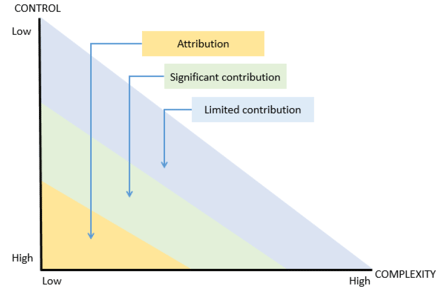Monitoring the outcomes of planning: a research study
Discusses issues related to performance management and informs future work on developing new approaches to assessing performance in the planning system.
4. Outcomes-based performance management
4.1 The aspiration to create an outcomes-based performance management ( OBPM) system is not confined to planning. In the Scottish policy context it is reflected in the National Performance Framework which identifies 16 National Outcomes, supported by a battery of National Indicators. Local outcome improvement plans ( LOIPs) show how local authorities/community planning partnerships will contribute to the National Outcomes. The National Performance Framework is the centrepiece of what has become known as the Scottish approach to public service reform, which was the subject of the 2011 Christie Commission Report.
4.2 The Scottish approach is characterised by "a move within public services from top-down, service-led, reactive delivery, towards more personalised, preventative and collaborative ways of working". Traditionally, outcome monitoring has been predicated on a direct, linear, "cause and effect" relationship between interventions and outcomes. The Scottish approach recognises that interventions interact with multiple other factors to influence outcomes (Cook, 2017). It also acknowledges the distinction between:
- programme outcomes: changes directly resulting from services and interventions, with a focus on service providers and users
- population outcomes: how things are for people at the national, regional or local level, and
- personal outcomes: what matters for individuals, families and communities.
4.3 Contemporary performance management practice tends to be more cautious about attributing outcomes directly to public sector services and interventions. The traditional linear perspective assumed a greater degree of control and/or predictability than is normally the case. Cook notes that, in practice, most interventions are "delivered in a complex, adaptive system which is influenced in unpredictable ways by internal and external factors". As shown in Figure 4-1, this understanding tends to limit the territory in which outcomes can be confidently attributed to services/interventions and to expand the territory in which policy aims to exert influence through partnership and co-production.
Figure 4-1: Control, complexity and degree of influence

Source: Adapted from Cook (2017)
4.4 An outcomes-based approach should promote collaboration between sectors and agencies and a better understanding of the driving forces (social, economic, technological, environmental and political) influencing events. It is intended to promote organisational learning and innovation, increase transparency and accountability, and encourage long-term thinking.
4.5 The case for performance management systems that acknowledge complexity is widely recognised, but they are notoriously difficult to design and implement. Cook (op cit) cites research showing that "implementing population level outcomes-based approaches takes time and involves considerable shifts in culture, systems and practice". Linear, cause-and-effect attribution may be problematic but it has the virtue of relative simplicity. Despite this, Cook argues that "outcomes-based approaches must embrace complexity, value the perspective and contributions of multiple stakeholders and capture evidence to support improvement and transformation". She sets out a route map for practitioners and policy makers, based on the following guiding principles:
- navigate a path through complexity with a robust theory of change
- promote partnership and co-production by focusing on outcomes
- understand the journey as well as the outcomes
- ensure data is meaningful and use multiple sources of evidence
- maximise impact and efficacy by tailoring your approach
- celebrate success and share learning
- use outcomes-based approaches to evaluate progress and improve policy.
Contact
There is a problem
Thanks for your feedback